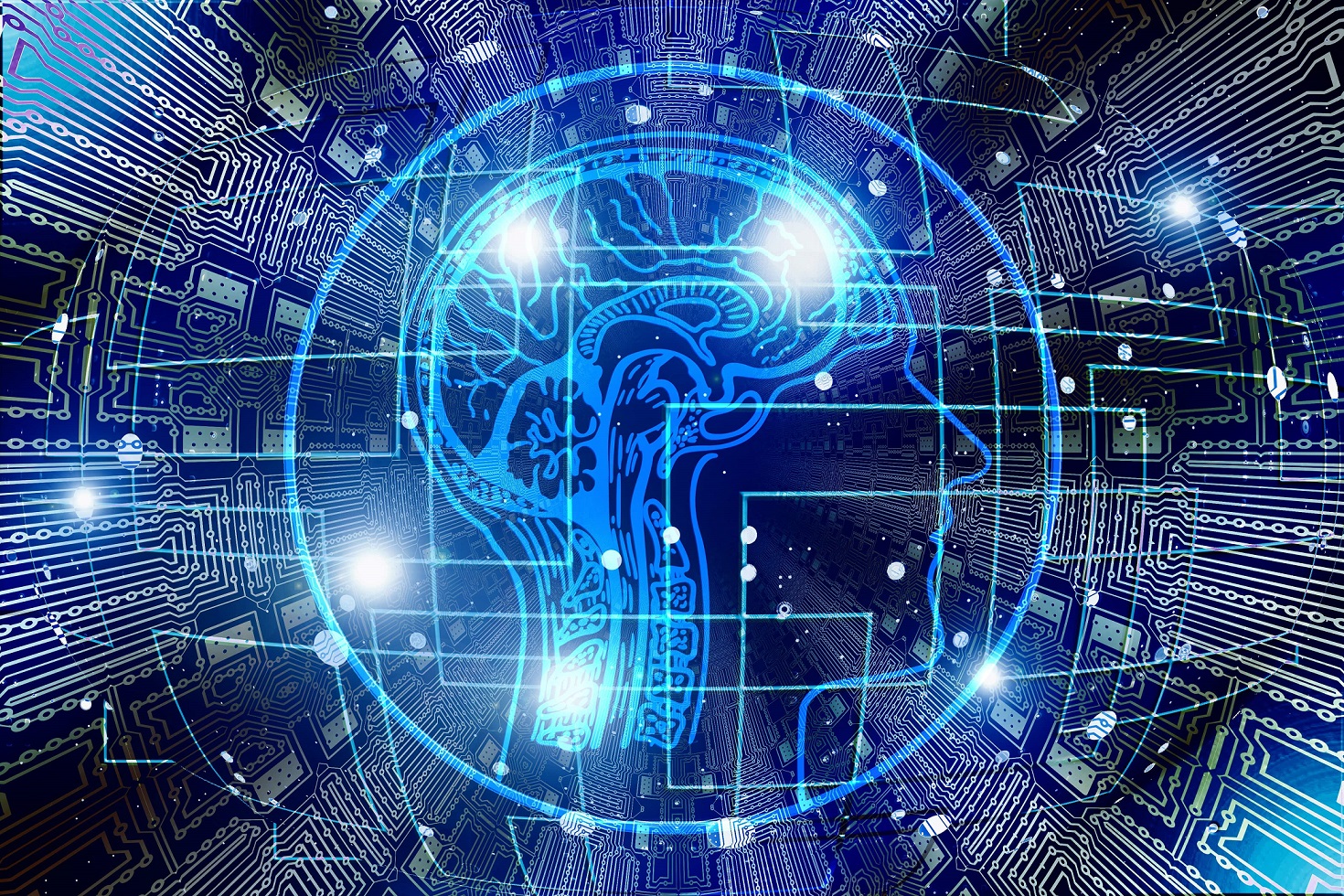20 Neurophysiology of Sleep
Table of Contents
20.3 By Receptor Pharmacodynamics – Pharmacokinetics / Genetics. 5
20.4 By Endogenous Neuro Transmitters. 6
20.5 By Neuro Chemical Action. 10
20.7 By CNS Neural Pathways. 12
20.8 By Function (excepting impairment, non-medical use domains) 13
20.9 By Function: Impairment 14
See Also
Insomnia
Benzodiazepines Insomnia
Z Drugs
20.1 Reviews |
Expert Opinion
Guidelines
Meta – Analyses
Reviews
Dijk DJ, von Schantz M. Timing and consolidation of human sleep, wakefulness, and performance by a symphony of oscillators. J Biol Rhythms. 2005;20(4):279-90. Abstract
Franken P, Dijk DJ. Circadian clock genes and sleep homeostasis. Eur J Neurosci. 2009;29(9):1820-9. Abstract
Hanlon EC, Vyazovskiy VV, Faraguna U, et al. Synaptic potentiation and sleep need: clues from molecular and electrophysiological studies. Curr Top Med Chem. 2011;11(19):2472-82. Abstract
Van Someren EJ, Cirelli C,Dijk DJ, et al. Disrupted sleep: from molecules to cognition. J Neurosci. 2015;35(41):13889-95. Article
Vecchierini MF. Sleep: regulation and phenomenology. Rev Mal Respir. 2013;30(10):843-55. Abstract
20.2 By Receptor |
Acetylcholine Receptor
Muscarinic
Nicotinic
Alpha4 Beta2
Alpha6 Beta2
AMPA Receptor
Diering GH, Nirujogi RS, Roth RH, et al. Homer1a drives homeostatic scaling-down of excitatory synapses during sleep. Science. 2017;355(6324):511-515. Abstract
Calcium Channel
Alpha2 Delta
Metabotropic
Cannabinoid Receptor
Murillo-Rodriguez E, Pastrana-Trejo JC, Salas-Crisóstomo M, de-la-Cruz M. The endocannabinoid system modulating levels of consciousness, emotions and likely dream contents. CNS Neurol Disord Drug Targets. 2017 Feb 23. [Epub ahead of print] Abstract
Murillo-Rodriguez E, Poot-Ake A, Arias-Carrion O, et al. The emerging role of the endocannabinoid system in the sleep-wake cycle modulation. Cent Nerv Syst Agents Med Chem. 2011;11(3):189-96. Abstract
Murillo-Rodríguez E. The modulatory role of endocannabinoids in sleep. Rev Neurol. 2008;46(3):160-6. Abstract
CB1
CB2
GPR55
Chemokine Receptor
Chloride Channel Receptor
Cholecystokinin Receptor
Cortioctropin Receptor
Dopamine Receptor
DRD1
DRD2
DRD3
GABA Receptor
GABAA
Ehlen JC, Paul KN. Regulation of light’s action in the mammalian circadian clock: role of the extrasynaptic GABAA receptor. Am J Physiol Regul Integr Comp Physiol. 2009; 296(5): R1606-12. Article
Gotter AL, Garson SL, Stevens J, et al. Differential sleep-promoting effects of dual orexin receptor antagonists and GABAA receptor modulators. BMC Neurosci. 2014;15:109. Article
Nutt DJ, Stahl SM. Searching for perfect sleep: the continuing evolution of GABAA receptor modulators as hypnotics. J Psychopharmacol. 2010;24(11):1601-12. Abstract
GABAB
Glucagon Receptor
Glycine Receptor
Histamine Receptor
H1
H2
Kainate Receptor
Melatonin Receptor
Motilin Receptor
Neurokinin Receptor
NK1
Neuropeptide Y Receptor
NMDA Receptor
Metabotropic
Opioid Receptor
Mu
Mu1
Mu2
Kappa
Kappa1
Kappa2
Kappa3
Delta
Nociceptin (Orphanin, ORL-1)
Orexin Receptor
Gotter AL, Garson SL, Stevens J, et al. Differential sleep-promoting effects of dual orexin receptor antagonists and GABAA receptor modulators. BMC Neurosci. 2014;15:109. Article
Krystal AD, Benca RM, Kilduff TS. Understanding the sleep-wake cycle: sleep, insomnia, and the orexin system. J Clin Psychiatry. 2013;74 Suppl 1:3-20. Article
Oxytocin Receptor
P2X Receptor
Potassium Channel Receptor
PPAR-a (Peroxisome Proliferator-Activated Receptor-alpha) Receptor
Secretin Receptor
Serine Receptor
Serotonin Receptor
Monti JM. Serotonin control of sleep-wake behavior. Sleep Med Rev. 2011;15(4):269-81. Abstract
5-HT1a
5-HT1b
5-HT1d
5-HT2a
5-HT2b
5-HT2c
5-HT3
5-HT4
5-HT5a
5-HT6
5-HT7
Sigma Receptor
Sodium Channel Receptor
Somatostatin Receptor
TRPV1 (Transient Receptor Potential Vanillioid1) channel Receptor
Vasoactive Intestinal Peptide Receptor
Vasopressin Receptor
20.3 By Receptor Pharmacodynamics – Pharmacokinetics / Genetics |
1A2
2A6
2B6
2C8
2C9
2C19
2E1
3A4
3A5
3A7
5-HTTLPR
Brummett BH, Krystal AD, Ashley-Koch A, et al. Sleep quality varies as a function of 5-HTTLPR genotype and stress. Psychosom Med. 2007;69(7):621-4. Article
Mono-Amine Oxidase (MAO)
Brummett BH, Krystal AD, Siegler IC, et al. Associations of a regulatory polymorphism of monoamine oxidase-A gene promoter (MAOA-uVNTR) with symptoms of depression and sleep quality. Psychosom Med. 2007;69(5):396-401. Article
UGT 1A4
UGT 1A6
UGT 2B7
UGT 2B15
UGT 2B17
COMT
Epigenetics
20.4 By Endogenous Neuro Transmitters |
Adenosine
Agouti-Related Peptide
ATP
BDNF
Bombesin
Calcitonin Gene-Related Peptide
α-CGRP
β-CGRP
Cannabinoids
Andanamide
Cytokines
Elements
Calcium
Chloride
Magnesium
Sodium
Zinc
Galanin
Ghrelin
Hormones
Adrenocorticotropic hormone
Anabolic Steroids
DHEA
Testosterone
Corticosteroids
Estrogens
Growth Hormone
Oxytocin
Prolactin
Somatostatin
Thyroid Hormone
Vasopressin
Leptin
Monoamines
Acetyl – choline (ACh)
Aspartate
Dopamine
Epinephrine
GABA (Gamma – amino butyric acid)
Leonard BE. Sleep disorders and anxiety: biochemical antecedents and pharmacological consequences. J Psychosom Res. 1994;38 Suppl 1:69-87. Abstract
Glutamate
Glycine
Histamine
N – acetyl – aspartyl – glutamate (NAAG)
Melatonin
Norepinephrine
Octopamine
Serine
Serotonin
Tyramine
Gastrins
Gastrin
Cholecystokinin
Gastrin Releasing Peptide
Neurohypophyseals
Neurophysin I
Neurophysin II
Neurokinins
Neurokinin A
Neurokinin B
Neuropeptide Y
Neuromedin U
Neurotensin
Neurotrophins
Brain-Derived Neurotrophic Factor (BDNF)
Nerve Growth Factor
Neurotrophin-3 (NT-3)
Neurotrophin 4/5 (NT-4/5)
Pancreatic polypeptide
Peptide YY
Secretins
Glucagon
Growth Hormone – Releasing Factor
Motilin
Secretin
Vasoactive intestinal peptide
Nitric oxide
Opioid
Dynorphin
Endorphin
Enkephalin
Tachykinins
Neurokinin A
Neurokinin B
Substance P
20.5 By Neuro Chemical Action |
Agonists
Partial Agonists
Inverse Agonists
Antagonists
Agonist – Antagonists
Reverse Agonists
20.6 By CNS Loci |
Vandewalle G, Archer SN, Wuillaume C, et al. Functional magnetic resonance imaging-assessed brain responses during an executive task depend on interaction of sleep homeostasis, circadian phase, and PER3 genotype. J Neurosci. 2009;29(25):7948-56. Article
Amygdala
Core
Shell
Anterior Cingulate
Arcuate Nucleus
Basal Optic Nucleus of Meynert
Cortex
Esser SK, Hill SL, Tononi G. Sleep homeostasis and cortical synchronization: I. Modeling the effects of synaptic strength on sleep slow waves. Sleep. 2007;30(12):1617-30. Article
Hippocampus
Blanco W, Pereira CM, Cota VR, et al. Synaptic homeostasis and restructuring across the sleep-wake cycle. PLoS Comput Biol. 2015;11(5):e1004241. Article
Arcuate nucleus
Hypothalamus
Insula
Anterior Insula
Posterior Insula
Limbic
Locus ceruleus
Medial Septal Nucleus
Nucleus accumbens
Core
Shell
Pallidum (Globus Pallidus)
Prefrontal Cortex
Medial Prefrontal
Orbital Frontal
Raphe Nucleus
Caudal Dorsal
Rostral Dorsal
Spinal Cord
Chemoreceptor Trigger Zone
Dorsal Horn
Tegmental Area
Lateral
Ventral
20.7 By CNS Neural Pathways |
Cholinergic System
Ponto – mesen – cephalo – tegmental complex
Dopamine System
Mesocortico – pathway
Mesolimbic – pathway
Nigrostriatal – pathway
Tuberofundibular – pathway
Noradrenal System
Lateral tegmental field
Serotonin System
20.8 By Function (excepting impairment, non-medical use domains) |
Overall
Quality of Life
Ability
Home
School
Work
Appetite
Coordination
Endurance
Energy
Enjoyment
Injury
Mood
Wehrens SM, Hampton SM, Kerkhofs M, Skene DJ. Mood, alertness, and performance in response to sleep deprivation and recovery sleep in experienced shiftworkers versus non-shiftworkers. Chronobiol Int. 2012;29(5):537-48. Abstract
Anger
Anxiety
Fear
Sadness
Outlook
Sexual Function
Social Life
Somnolence
Strength
Weight
Withdrawal
20.9 By Function: Impairment |
Acute Impairment
Acute Cognitive Effects
Acute Cognitive Effects: Memory
Acute Psychomotor Effects
Acute Psychomotor Effects: Driving
Chronic Impairment
Chronic Cognitive Effects
Binks PG, Waters WF, Hurry M. Short-term total sleep deprivations does not selectively impair higher cortical functioning. Sleep. 1999;22(3):328-34. Abstract
Dinges DF, Pack F, Williams K, et al. Cumulative sleepiness, mood disturbance, and psychomotor vigilance performance decrements during a week of sleep restricted to 4-5 hours per night. Sleep. 1997;20(4):267-77. Abstract
Kamdar BB, Kaplan KA, Kezirian EJ, Dement WC. The impact of extended sleep on daytime alertness, vigilance, and mood. Sleep Med. 2004;5(5):441-8. Abstract
Killgore WD. Effects of sleep deprivation on cognition. Prog Brain Res. 2010;185:105-29. Abstract
Lim J, Dinges DF. Sleep deprivation and vigilant attention. Ann N Y Acad Sci. 2008;1129:305-22. Abstract
Lo JC, Groeger JA, Santhi N, et al. Effects of partial and acute total sleep deprivation on performance across cognitive domains, individuals and circadian phase. PLoS One. 2012;7(9):e45987. Article
Mollicone DJ, Van Dongen HP, Rogers NL, et al. Time of day effects on neurobehavioral performance during chronic sleep restriction. Aviat Space Environ Med. 2010;81(8):735-44. Abstract
Odle-Dusseau HN, Bradley JL, Pilcher JJ. Subjective perceptions of the effects of sustained performance under sleep-deprivation conditions. Chronobiol Int. 2010;27(2):318-33. Abstract
Pilcher JJ, Band D, Odle-Dusseau HN, Muth ER. Human performance under sustained operations and acute sleep deprivation conditions: toward a model of controlled attention. Aviat Space Environ Med. 2007;78(5 Suppl):B15-24. Abstract
Poe GR, Walsh CM, Bjorness TE. Cognitive neuroscience of sleep. Prog Brain Res. 2010;185:1-19. Article
Sagaspe P, Charles A, Taillard J, et al. Inhibition and working memory: effect of acute sleep deprivation on a random letter generation task. Can J Exp Psychol. 2003;57(4):265-73. Abstract
Vandewalle G, Archer SN, Wuillaume C, et al. Effects of light on cognitive brain responses depend on circadian phase and sleep homeostasis. J Biol Rhythms. 2011;26(3):249-59. Abstract
Van Someren EJ, Cirelli C, Dijk DJ, et al. Disrupted sleep: from molecules to cognition. J Neurosci. 2015;35(41):13889-95. Article
Van Dongen HP, Dinges DF. Sleep, circadian rhythms, and psychomotor vigilance. Clin Sports Med. 2005;24(2):237-49, vii-viii. Abstract
Chronic Cognitive Effects: Memory
Astori S, Wimmer RD, Lüthi A. Manipulating sleep spindles – expanding views on sleep, memory, and disease. Trends Neurosci. 2013;36(12):738-48. Abstract
Born J. Slow-wave sleep and the consolidation of long-term memory. World J Biol Psychiatry. 2010;11 Suppl 1:16-21. Abstract
Clawson BC, Durkin J, Aton SJ. Form and function of sleep spindles across the lifespan. Neural Plast. 2016;2016:6936381. Article
Fogel SM, Smith CT. The function of the sleep spindle: a physiological index of intelligence and a mechanism for sleep-dependent memory consolidation. Neurosci Biobehav Rev. 2011;35(5):1154-65. Abstract
Girardeau G, Zugaro M. Hippocampal ripples and memory consolidation. Curr Opin Neurobiol. 2011;21(3):452-9. Abstract
Mölle M, Born J. Slow oscillations orchestrating fast oscillations and memory consolidation. Prog Brain Res. 2011;193:93-110. Abstract
Rattenborg NC, Martinez-Gonzalez D, Roth TC, Pravosudov VV. Hippocampal memory consolidation during sleep: a comparison of mammals and birds. Biol Rev Camb Philos Soc. 2011;86(3):658-91. Article
Ulrich D. Sleep spindles as facilitators of memory formation and learning. Neural Plast. 2016;2016:1796715. Article
Chronic Psychomotor Effects
Chronic Psychomotor Effects: Driving
20.10 By Exogenous Agent |
Alcohol
Antipsychotics
Aripiprazole (Abilify)
Asenapine (Saphris)
Clozapine (Clozaril)
Haloperidol (Haldol)
Lurasidone (Latuda)
Olanzapine (Zyprexa)
Paliperidone (Invega)
Prochlorperazine (Compazine)
Quetiapine (Seroquel)
Risperidone (Risperdal)
Ziprasidone (Geodon)
Calcium Channel Agent
Gabapentin
Pirault
Pregabalin
Cannabinoids:
See Cannabinoids and Mental Health
See Insomnia
Element
Calcium
Chloride
Lithium
Magnesium
Sodium
Zinc
GABA Receptor Agent
Barbiturates
Benzodiazepines
Eszopiclone
GABA
Melatonin
Tiagabine
Valproic Acid
Zepelon
Zolpidem
Gas
CO
Nitrous oxide
Hallucinogen
LSD
Mescaline
Myristic acid
NBOMe Compounds
Monoamine Reuptake Inhibitor
Buproprion
Mirtazepine
SNRI
Desvenlafaxine
Duloxetine
Milnacipran
Venlafaxine
SSRI
Citalopram
Escitalopram
Fluoxetine
Paroxetine
Sertraline
Vilazodone
TCA
Amitriptylline
Desipramine
Doxepin
Nortriptylline
Trazodone
Muscle Relaxant
Baclofen
Carisoprodol
Chlorzoxazone
Cyclobenzaprine
Metaxalone
Methacarbamol
Tizanidine
Nicotinic agonists
Cystine
Nicotine
Varenicline
NMDA Agonist
D-serine
NMDA Antagonist
Amantidine
Dextromethorphan
Ketamine
Memantine
Nitrous Oxide
Phencyclidine
NSAID
Opioid
Mu Agent
Kappa Agent
Delta Agent
Nociceptin Agent
Mixed Agent
Sodium Channel Agent
Carbamazepine
Lamotrigine
Lidocaine
Phenytoin
Topiramate
Zonisemide
Stimulant
Amphetamine
Armodafinil
Caffeine
Cocaine
Dextroamphetamine
Methamphetamine
Methylphenidate
Modafinil
Phentermine
TRPV1 Agent
Capsacin


